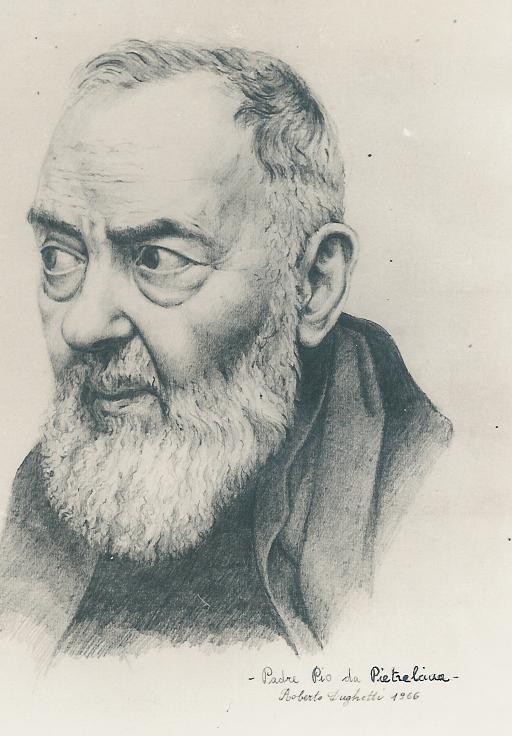Saint Pater Pio (or Padre Pio) (born Francesco Forgione on May 25, 1887 – died September 23, 1968) was an Italian priest who had stigmata for many years. What was so unusual about St. Pio's stigmata was that when it bled, the blood smelled of perfume or flowers. He acquired fame as a miracle worker and clairvoyant. He is described as having been a pious youth who often fell into "trances" and hallucinating states of altered consciousness. He also developed a habit of self-flagellation, a behavioural phenomenon associated with religious extremism thought to fuel altered mental states. He is alleged by believers to have been able to bilocate and was granted a dispensation from ever saying the Novus Ordo Mass. On June 16, 2002, Pope John Paul II proclaimed the famous Pater Pio as Saint Pio of Pietrelcina. Skeptics have classified Padre Pio as a "pious fraud," opining that his widely-reported stigmata were self-inflicted. During his lifetime, Padre Pio was the subject of two official investigations conducted by Vatican authorities.

Biographical outline
- Born in Pietrelcina, Italy
- Baptised in Santa Anna Church, Pietrelcina
- Joined Order of Friars Minor Capuchin in 1903
- Ordained in Cathedral of Benevento in 1910
- Assigned priest at Santa Maria degli Angeli (Our Lady of the Angels), Pietrelcina; stigmata began
- Served in Italian Medical Corps 1917–1918
- Began plans for Casa Sollievo della Sofferenza (Home to Relieve Suffering) in 1940; hospital opened in San Giovanni Rotondo in 1956
Vocation
At the early age of 16, 6 January 1903, he entered the novitiate of the Capuchin Friars at Morcone, where on 22 January he took the Franciscan habit and the name of Brother Pio. He took simple vows during his novitiate year, and on 27 January 1907, made his solemn profession.
Ordination
He was ordained a priest on 10 August 1910 at Benevento. For health reasons he remained with his family until early 1916. Later that same year he went to the friary of San Giovanni Rotondo, at the request of his superiors and remained there until his death.
Rome
On 20 February 1971, Pope Paul VI, speaking to the superiors of the Capuchin Order, said of Padre Pio:
"Look what fame he had, what a worldwide following gathered around him! But why? Perhaps because he was a philosopher? Because he was wise? Because he had resources at his disposal? Because he said Mass humbly, heard confessions from dawn to dusk and was—it is not easy to say it—one who bore the wounds of our Lord.
He was a man of prayer and suffering".
Pater Pio was proclaimed Venerable on 18 December 1997 by Pope John Paul II. It was the first step to his canonization.
On 5 May 1999, Pope John Paul II proclaimed Padre Pio Beatific. It was the second step to his canonization.
On 16 June 2002, Pope John Paul II proclaimed Padre Pio, Saint Pio of Pietrelcina.
Half a million people were in attendance at the announcement ceremony.
San Giovanni Rotondo
On 1 July 2004, the San Giovanni Rotondo was dedicated to his memory by Pope John Paul II on the spot where Pater Pio lived.[1]
Irish Republican Army
In 2004, the Irish Republican Army began using a new method of punishment for people they considered disruptive. This new punishment has been dubbed the "Padre Pio" because it involves shooting the alleged offender in the palms of both hands; this is a reference to Pio's well-known case of stigmata.